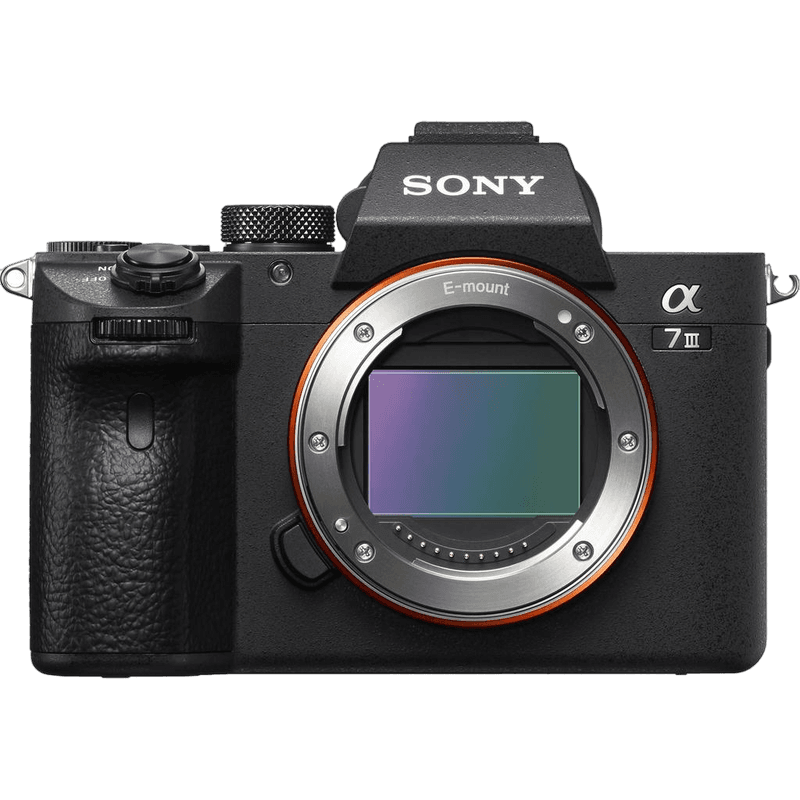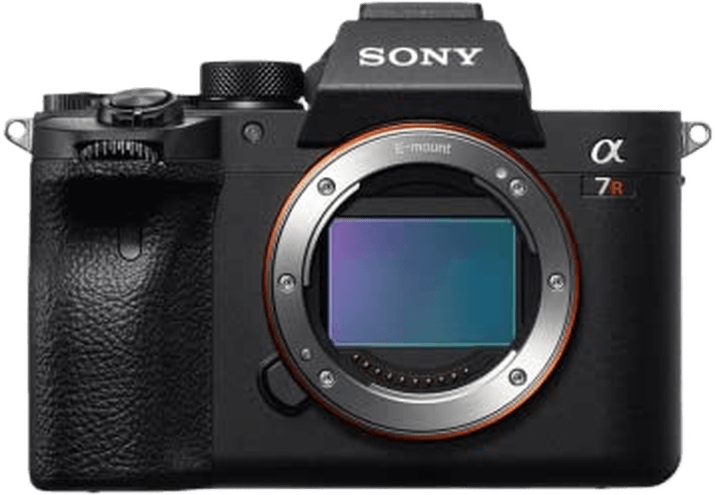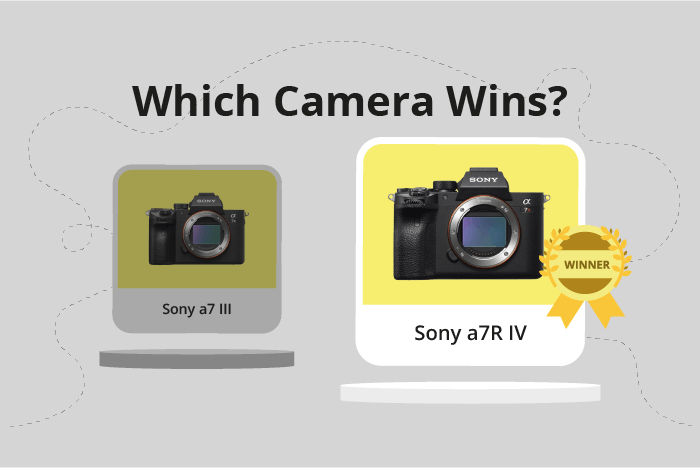Sony a7 III vs a7R IV Comparison
Sony a7 III

Sony a7R IV

The Sony a7R IV emerges as the winner with a score of 84, while the Sony a7 III trails behind with 81. Both cameras are mirrorless and share similar dimensions and weight, with the a7R IV being slightly larger and heavier. They were released in 2018 and 2019, respectively.
The a7R IV outperforms the a7 III with its higher score, which can be attributed to its superior specifications. However, the a7 III still has some advantages, such as its lower launch price of $2000 compared to the a7R IV’s $3500.
Taking everything into account, the Sony a7R IV is the better camera due to its higher score and enhanced features. Nevertheless, the Sony a7 III may be a more suitable choice for those on a tighter budget who still want a high-quality mirrorless camera.
Sony a7 III vs a7R IV Overview and Optics
The Sony a7R IV outperforms the Sony a7 III in optics with a score of 85/100, a difference of 4 points compared to the a7 III’s 81/100.
Both cameras share several optical specifications, including a shooting speed of 10 frames per second, a CMOS sensor type, the Bionz X processor, a full-frame sensor size, a Sony FE lens mount, and image stabilization. These common features provide a solid foundation for both cameras in terms of optics.
The a7R IV has a superior DXOMARK sensor score of 99, compared to the a7 III’s 96. This higher score signifies better overall image quality and performance. Additionally, the a7R IV boasts a remarkable 61.2 megapixels, which contributes to its higher score and allows for greater detail and larger prints than the a7 III’s 24.2 megapixels.
The Sony a7 III, while having a lower score, still offers excellent optics with its 24.2-megapixel sensor. This camera provides ample resolution for most photographers and situations, and its lower megapixel count can result in faster processing and smaller file sizes. This may be beneficial for those who prioritize speed and storage efficiency.
Considering these factors, the Sony a7R IV is the superior choice for photographers seeking the highest possible image quality and detail. However, the Sony a7 III remains a strong contender for those who require more than adequate optics at a potentially lower price point. Both cameras provide exceptional performance, but the a7R IV stands out as the winner in the optics category.
Sony a7 III vs a7R IV Video Performance
The Sony a7R IV and Sony a7 III are extremely closely matched in video capabilities. Both cameras share some common specifications in the video department, such as 4K maximum video resolution, 3840 x 2160 maximum video dimensions, and a 30fps maximum video frame rate.
Both models feature built-in time-lapse functionality. This allows for the creation of stunning time-lapse videos without the need for external software or equipment, making it more convenient for videographers who frequently use this technique.
Both cameras share the same maximum video resolution, dimensions, and frame rate, making them equally suitable for various video applications.
Sony a7 III vs a7R IV Features and Benefits
The Sony a7R IV emerges as the winner with a feature score of 83/100, compared to the Sony a7 III’s 81/100. Both cameras share several common specifications, including a 3-inch screen size, touchscreen functionality, flip screen, and the absence of GPS. They also come equipped with WIFI and Bluetooth capabilities.
The Sony a7R IV outperforms the Sony a7 III in screen resolution, boasting 1,440,000 dots compared to the Sony a7 III’s 921,600 dots. This higher resolution provides a sharper and clearer display, enhancing the user experience and making it easier to review and compose images.
While the Sony a7 III has a lower feature score, it still offers a solid set of specifications that are suitable for various photography needs. Its 3-inch touchscreen and flip screen provide flexibility for shooting at different angles, while its WIFI and Bluetooth connectivity facilitate easy file transfers and remote control of the camera.
Considering the points mentioned, the Sony a7R IV proves to be the superior camera in terms of features, particularly with its higher screen resolution. This advantage makes it more suitable for photographers who prioritize image clarity and display quality. On the other hand, the Sony a7 III remains a strong contender with its similar set of features and may be more appealing to those who want a capable camera without the need for the highest screen resolution.
Sony a7 III vs a7R IV Storage and Battery
Both cameras share several specifications, such as having two memory card slots, accepting SD/SDHC/SDXC cards, and utilizing the NP-FZ100 battery type.
The a7 III has a longer battery life, offering 750 shots compared to the a7R IV’s 670 shots. This advantage may be beneficial for photographers who prioritize longer shooting times without recharging.
Alternatives to the Sony a7 III and a7R IV
Are you still undecided about which camera is right for you? Have a look at these popular comparisons that feature the Sony a7 III or the Sony a7R IV:

